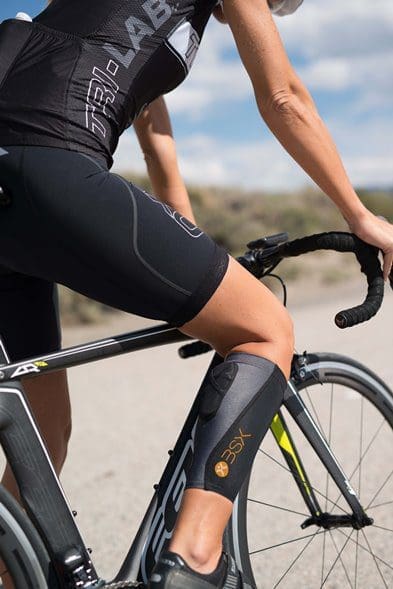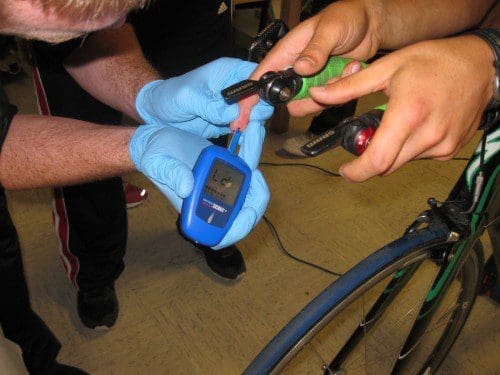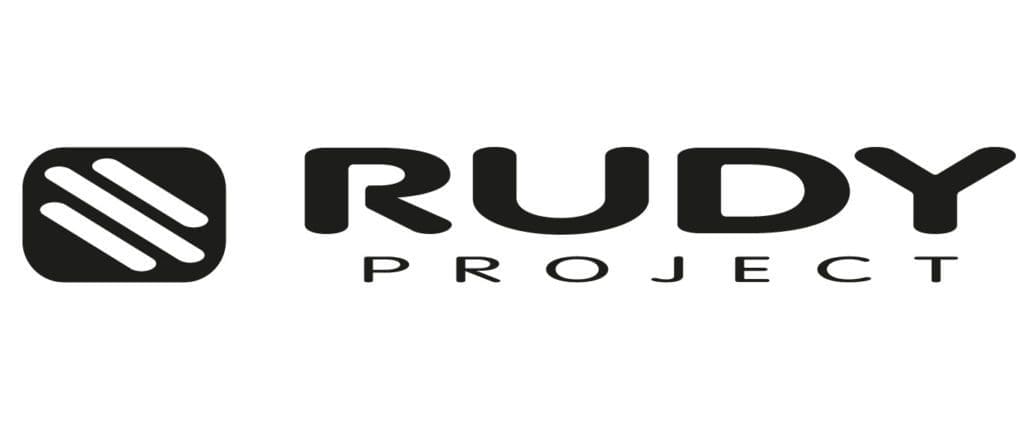Ride hard, draw blood, rider harder, draw more blood . . .
Sounds like fun right? We don’t think so either. Athletes looking for an accurate determination of their lactate threshold have had to subject themselves to this time consuming, expensive, and painful process.
BSX Athletics is looking to change how athletes and trainers test lactate threshold. They have come up with an innovative (and painless) way to test LT in athletes.
But let’s come back to that. First, what is lactate threshold and why is it important?
We asked Kansas City based coach Gina Poertner of LifeBalance Sports and Wellness about LT, “Lactate threshold is the line between aerobic and anaerobic training. To put it simply, it’s the level of effort a conditioned athlete can maintain for 60 minutes. The bad news is that it burns when you cross the threshold. The good news is that increasing your threshold is quite trainable. ”
If an athlete pushes past their LT they will begin an inevitable decline in performance. Once the LT is cross, according to Poertner, “Lactic acid builds up faster than the body can absorb it.”
The ultimate goal of understanding your lactate threshold is to raise your LT through targeted training techniques. This in turn allows you to put out more power at a given heart rate. In other words you can go faster, longer, more comfortably. [pullquote type=”right”]BSX Athletics has completely changed the game when it comes to lactate threshold training. No longer the exclusive domain of the elite athlete, BSX Athletics has brought lactate threshold testing to the masses.[/pullquote]
Poertner points out the importance of including lactate threshold training into your workouts, “Over time, with appropriate training, your body can become more tolerant of lactic acid. It can also become better at removing the acid. The lactic acid, by the way, is not what causes the burning sensation in the muscles. That is caused by hydrogen ions being given off and interfering with muscle contractions. To take this further, the muscles soreness you feel the day after a hard workout is caused by neither lactic acid nor the hydrogen ions. Delayed-Onset Muscle Soreness is a whole ‘nother can of worms.”
It is also important to note that your LT on the bike is going to be different than your running LT. “For each sport that you train, you will have a different LTHR (Lactate Threshold Heart Rate), so you will want to do a test for each sport such as cycling, running, swimming, etc. in order to correctly train each discipline.” This is particularly important for triathletes to consider when adjusting their training zones for each sport.
Lactate Threshold Testing
LT testing has traditionally been performed in the lab. To test the LT a rider must pedal against ever-increasing resistance. As the test progresses, blood samples are taken from the rider at various intervals to measure lactate levels. It isn’t the most enjoyable experience and requires a lab, a technician or coach, and a lot of equipment.
In addition to lab testing, an approximate LT can be determined, with a bit less accuracy, through various on the bike tests.
So what are you to do if lab testing is too expensive or not available to you, and you want something more than an approximation of your lactate threshold?
BSX Insight
 Enter the BSX Insight. Houston based BSX Athletics debuted the device at Interbike in September. The sensor is an award-winning, wearable, needle free, lactate threshold sensor.
Enter the BSX Insight. Houston based BSX Athletics debuted the device at Interbike in September. The sensor is an award-winning, wearable, needle free, lactate threshold sensor.
They currently offer three different lactate threshold devices, Running Edition, Cycling Edition, and a Multisport Edition. As Gina mentioned, a separate test is required for each sport to determine the sport specific lactate threshold. The multisport sensor simplifies this process making both cheaper and more convenient than having to set up several different lab tests.
So How Does the BSX Insight Measure Lactate Threshold?
BSX Athletics explained exactly how the device works, “The device uses near-infrared spectroscopy to non-invasively monitor athletic performance. NIRS uses light to measure and record activity inside living tissue in a safe manner. A light source shines a signal into the target which then passes through as it returns back to a detector.” Varying physical and chemical properties of the tissue distorts this signal along its path. This distortion is what allows the sensor to take its measurements.
Collecting and Using The Data
According to BSX, their algorithms are slightly more than 95% accurate at identifying LT. Plans to increase their sample size and improved measuring techniques are anticipated to increase the accuracy to 97%.
Each edition of BSXinsight measures and relays the lactate threshold and training zones for a single athlete. Depending upon preference or sport, training zones can be based on heart rate, power or pace. BSX Insight also automatically captures and stores all data – including real-time muscle oxygenation – for post-training breakdown and analysis at BSXinsight.com.
The process is relative straightforward. After you set up your assessment at BSXinsight.com the user has the option of pairing the sensor to ANT+ devices via the mobile app remote. The sensor is placed into the compression sleeve which is then secured to the leg. Once the device is recording it will provide training alerts that will help the athlete stay on target. Once the training session is completed the data is uploaded and results can then be viewed. The data can be synced via various coaching software.
BSX Athletics has completely changed the game when it comes to lactate threshold training. No longer the exclusive domain of the elite athlete, BSX Athletics has brought lactate threshold testing to the masses.
BSX is taking pre-orders now with delivery planned for December. Athletes interested in getting their hands on the Insight can order from their website.















